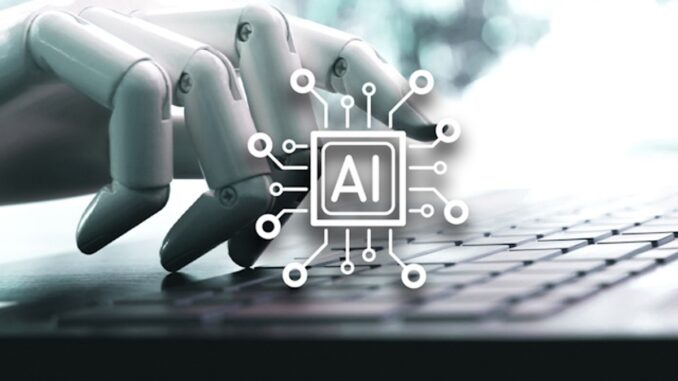
Integrating AI for real-time monitoring can enhance an organization’s ability to track, analyze, and respond to activities across various domains efficiently. Here are several applications and strategies for implementing AI-driven real-time monitoring:
– **Anomaly Detection**: Use AI algorithms to detect unusual traffic patterns, which may indicate potential cybersecurity threats or system malfunctions, allowing for immediate investigation and response.










– **Performance Optimization**: Monitor bandwidth and latency in real-time, predicting network congestion and recommending adjustments to maintain optimal performance.
### 2. **System Health Monitoring**
– **Predictive Maintenance**: Employ AI to analyze system performance data (e.g., CPU usage, memory performance) to predict failures before they occur, prompting timely maintenance and reducing downtime.
– **Resource Allocation**: AI can dynamically allocate resources (memory, storage) based on real-time usage patterns, ensuring efficient use of infrastructure.
### 3. **Application Performance Monitoring**
– **User Experience Analytics**: Use AI to track end-user experience in real-time, analyzing response times and user interactions to identify and fix issues that affect productivity.
– **Error Detection**: Implement AI monitoring tools that automatically detect and categorize errors in applications, allowing for faster debugging and resolution.
### 4. **Security Monitoring**
– **Intrusion Detection Systems (IDS)**: Leverage machine learning models to analyze logs and network traffic for signs of unauthorized access or suspicious behavior, enabling proactive threat detection.
– **Fraud Detection**: In financial applications, use AI to monitor transactions in real-time, identifying patterns of fraud and alerting security teams instantly.
### 5. **Cloud Infrastructure Monitoring**
– **Cost Management**: AI can track usage patterns of cloud resources in real-time, providing alerts and recommendations to optimize costs and resource allocation.
– **Compliance Monitoring**: Use AI to ensure that cloud infrastructures adhere to compliance standards by continuously monitoring configurations and access controls.
### 6. **Environmental Monitoring**
– **IoT Integration**: Integrate AI with IoT devices to monitor environmental conditions (temperature, humidity, air quality) in real-time, enabling automated responses to adverse changes.
– **Predictive Alerts**: AI can analyze data from sensors to predict potential environmental issues (e.g., equipment overheating) and alert relevant personnel.
### 7. **Business Process Monitoring**
– **Real-Time Analytics Dashboards**: Develop AI-powered dashboards that aggregate data from various business processes, allowing leaders to monitor overall performance and make data-driven decisions.
– **Workflow Optimization**: Analyze real-time workflow data to identify bottlenecks or inefficiencies, enabling timely interventions to enhance productivity.
### 8. **Customer Support Monitoring**
– **Sentiment Analysis**: Use AI to analyze customer interactions in real-time (emails, chats) to gauge sentiment and escalate significant issues to human agents.
– **Chatbot Monitoring**: Implement AI systems that monitor chatbot interactions, providing insights into performance and areas for improvement.
### 9. **Employee Performance Monitoring**
– **Productivity Analytics**: Use AI to track employees’ digital habits and collaboration patterns, providing tools for managers to support their teams more effectively.
– **Engagement Tracking**: Monitor engagement levels in remote meetings and collaboration tools, integrating feedback mechanisms that AI can analyze to enhance team dynamics.
### 10. **Energy Management**
– **Smart Building Systems**: Integrate AI into building management systems to monitor energy consumption in real-time, enabling automated control of lighting, heating, and cooling based on occupancy and usage patterns.
### Implementation Strategies
– **Integration Across Platforms**: Ensure that your AI monitoring tools can integrate seamlessly with existing systems, databases, and platforms for a comprehensive view.
– **Real-Time Data Processing**: Use technologies like edge computing to facilitate real-time data collection and analysis, reducing latency and improving responsiveness.
– **User-Friendly Dashboards**: Develop intuitive dashboards that display real-time metrics and alerts, making it easy for stakeholders to access and interpret monitoring results.
– **Regular Updates and Training**: Continually update AI models to adapt to new patterns or threats, and provide training for stakeholders on interpreting monitoring data effectively.
– **Feedback Loop**: Establish a feedback loop to ensure that insights from monitoring inform future development and operational decisions.
By effectively integrating AI for real-time monitoring, organizations can enhance operational efficiency, improve security, and drive informed decision-making, ultimately leading to better performance and customer satisfaction.


Leave a Reply